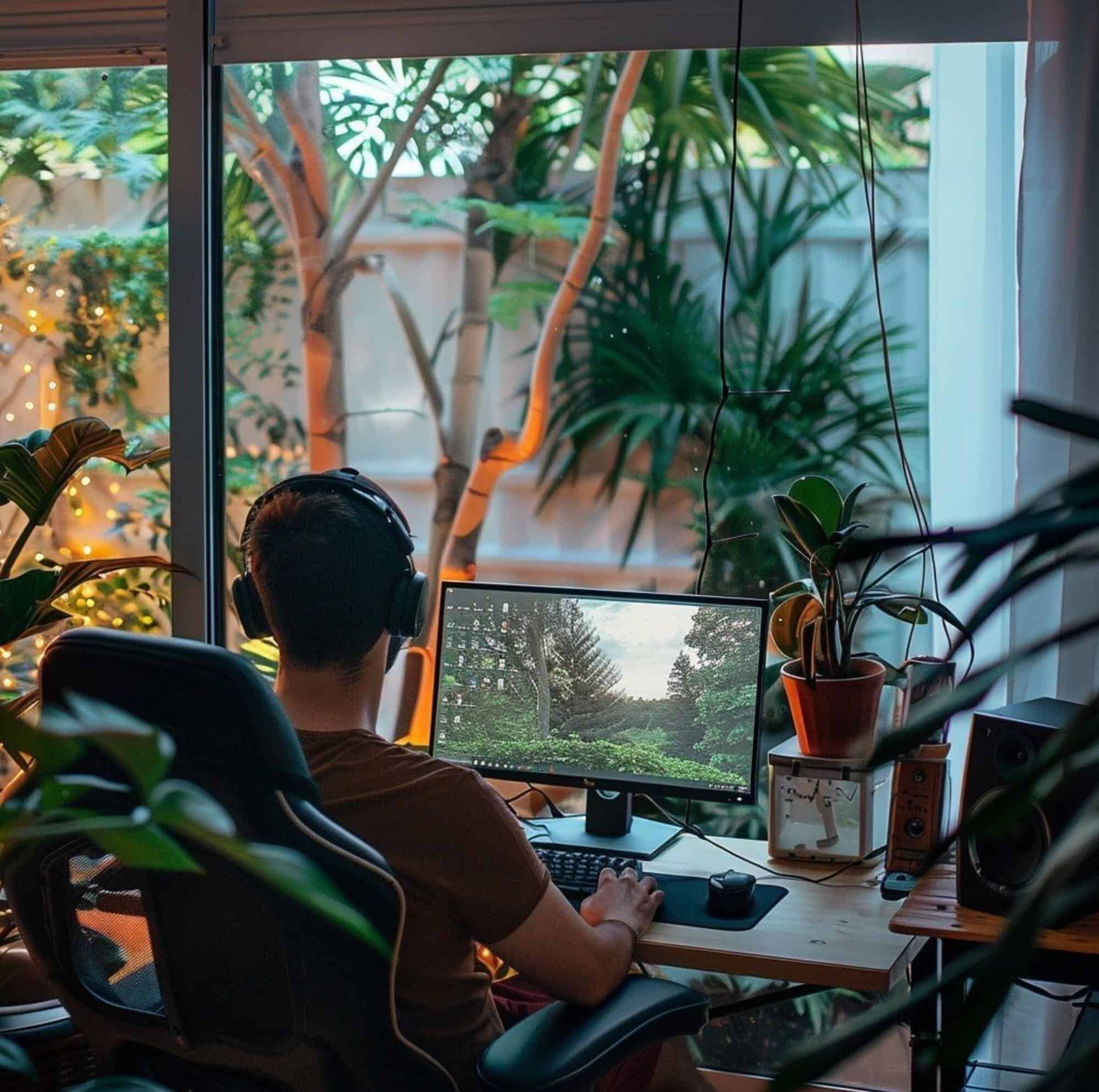Estimated reading time: 8 minutes
Key Takeaways
- A remote web designer job allows professionals to work from any location outside a traditional office.
- With the digital landscape evolving rapidly, the demand for talented remote web designers has risen sharply, and labour market data projects an 8 percent employment increase from 2023 to 2033.
- This guide explains how to secure and sustain a remote web designer role.
- One of the strongest draws of remote web design is the freedom to set your own schedule.
- By understanding the roles outlined above and the skills each one demands, you can position yourself for success, secure rewarding projects, and build a sustainable career from any location.
Table of contents
Introduction
A remote web designer job allows professionals to work from any location outside a traditional office. With the digital landscape evolving rapidly, the demand for talented remote web designers has risen sharply, and labour market data projects an 8 percent employment increase from 2023 to 2033. This upward trend offers significant opportunity for those wishing to build a career without geographical limits.
Whether you are an established designer seeking to shift into remote work or a newcomer aiming to gain a foothold in the field, this guide explains how to secure and sustain a remote web designer role. By outlining the various kinds of remote positions, clarifying the application process, and mapping out a sustainable career path, it sets out the practical steps needed to thrive in the competitive yet rewarding world of remote web design.
Benefits of Remote Web Design Positions
Flexibility in Work Hours and Locations
One of the strongest draws of remote web design is the freedom to set your own schedule. Unlike fixed office hours, remote work lets you align tasks with your most productive periods. Early riser or night owl, you can arrange your timetable to suit your natural rhythm.
Location flexibility is equally liberating. Remote web designers may work from home, cafés, co-working spaces, or while travelling. This independence enables digital nomadism, letting designers explore new places while meeting professional responsibilities. Many practitioners report higher job satisfaction and greater creative output when able to choose inspiring environments.
Access to a Global Job Market
Remote work broadens employment horizons beyond local openings.
You can collaborate with companies anywhere in the world without relocating. Access to international markets leads to varied projects, stronger pay packets, and exposure to worldwide design trends.
Opportunities are plentiful in tech hubs such as the United States, United Kingdom, and Australia, yet remain open no matter where you live. If local prospects decline, the global remote market still offers active vacancies.
Improved Work-Life Balance and Reduced Commuting Costs
Removing the daily commute delivers an immediate benefit. The average UK worker spends nearly 60 minutes travelling each day, time remote professionals can reclaim for family, fitness, or upskilling. The reclaimed hours raise quality of life and lower stress.
Financial savings add up quickly. Remote designers avoid travel fares, office wardrobes, and daily lunches out, often saving thousands of pounds per year. Because work is arranged around life commitments rather than the reverse, many remote web designers report higher life satisfaction and better mental health than their office-based peers.
Types of Remote Web Design Roles
Remote UI Designer
A remote UI designer focuses on the visual and interactive elements of websites and applications. Responsibilities include crafting buttons, icons, typography, colour schemes, and layouts that align with brand identity while encouraging engagement.
UI designers commonly use Figma, Sketch, and XD to create wireframes, prototypes, and design systems. They work closely with UX specialists to ensure visuals support usability. The job demands strong aesthetics, knowledge of visual hierarchy, and awareness of current trends.
Success also depends on clear communication. Remote UI designers must explain design choices and show how those choices advance business aims and user needs.
Remote UX Designer
Remote UX designers concentrate on refining the user path and making websites intuitive, accessible, and satisfying to use. They conduct user research, build personas, map user paths, and develop information architecture.
Tasks include running usability tests, analysing behaviour data, and iterating designs based on feedback. The role calls for analytical thinking, empathy, and problem-solving ability. Familiarity with human psychology, accessibility regulations, and multi-device interaction is essential.
These designers often use Miro for flows, InVision for prototypes, and Hotjar for behaviour analysis. Success comes from delivering seamless experiences that help users meet their goals quickly and enjoyably.
Remote Front-end Developer
Front-end developers bridge design and full-stack development, translating UI/UX concepts into functional code. They rely on HTML, CSS, and JavaScript along with frameworks such as React, Angular, or Vue.js. Awareness of responsive design, cross-browser issues, and performance optimisation is vital.
Collaboration is key: front-end developers liaise with designers to realise visual ideas and with back-end teams to connect server-side features. Working asynchronously, they must maintain high code quality, thorough testing, and clear communication of technical constraints to non-technical colleagues.
Remote Graphic Designer
Remote graphic designers create visual assets for websites and digital campaigns. Their scope extends beyond interfaces to marketing materials, social graphics, illustrations, and brand elements that reinforce online presence.
Expertise in the Creative Suite, especially Photoshop and Illustrator, is standard. A firm grasp of composition, typography, colour theory, and brand consistency is required. These designers often juggle banner ads, social visuals, email templates, and digital brochures.
Interpreting brand guidelines and applying them across multiple digital touchpoints is central to the role, as is responding to feedback swiftly in an online collaboration setting.
Remote Web Developer
Remote web developers manage the core functionality of websites and applications. In addition to client-side scripting, they handle server-side programming, databases, and deployment.
Common languages include PHP, Python, Ruby, and Node.js, paired with front-end skills. Duties range from implementing contact forms and e-commerce features to configuring content management systems and user authentication.
Success demands problem-solving skill, careful attention to detail, and precise documentation. Security awareness is critical because developers safeguard sites against vulnerabilities and ensure data privacy compliance.
Remote Digital Designer
Remote digital designers work across several digital platforms, creating cohesive experiences. Their remit spans websites, mobile interfaces, digital advertising, and interactive media.
These professionals combine broad technical knowledge with design expertise, often using the Creative Suite, Figma, and basic HTML and CSS to improve collaboration with developers. Staying current with emerging trends and technologies is essential, as is contributing to digital brand strategy and creating design systems for consistent output.
Remote Creative Designer
Creative designers focus on conceptual innovation. They generate ideas and approaches that set brands apart online. Tasks include brainstorming concepts, composing mood boards, and establishing unique visual styles for sites or campaigns.
The job requires strong ideation, originality, and the ability to translate abstract thoughts into practical designs. Effective communication is vital when sharing creative vision with distributed teams. Close work with marketing teams ensures visual output supports brand messages and campaign goals.
Web Design Telecommute Job
This broad category covers professionals handling general web design tasks while working from home. Duties may include client consultations, site mock-ups, implementation through builders or content management systems such as WordPress, and revisions based on feedback.
Generalists who enjoy varied responsibilities often excel here. Self-direction and virtual client-management skills are crucial because all interaction occurs online.
Conclusion
Remote web design offers flexibility, access to a global market, and the chance to craft a working life that fits personal rhythms. By understanding the roles outlined above and the skills each one demands, you can position yourself for success, secure rewarding projects, and build a sustainable career from any location.
FAQs
What is a remote web designer job?
A remote web designer job allows professionals to work from any location outside a traditional office.
What are the main benefits of remote web design positions?
One of the strongest draws of remote web design is the freedom to set your own schedule. Remote work broadens employment horizons beyond local openings. Removing the daily commute delivers an immediate benefit.
Which types of remote web design roles are available?
Remote UI Designer, Remote UX Designer, Remote Front-end Developer, Remote Graphic Designer, Remote Web Developer, Remote Digital Designer, Remote Creative Designer, and Web Design Telecommute Job.
What skills help remote UI and UX designers succeed?
UI success depends on clear communication and the ability to explain design choices that advance business aims and user needs. UX success comes from delivering seamless experiences that help users meet their goals quickly and enjoyably.
What is the employment outlook for remote web design from 2023 to 2033?
Labour market data projects an 8 percent employment increase from 2023 to 2033.







